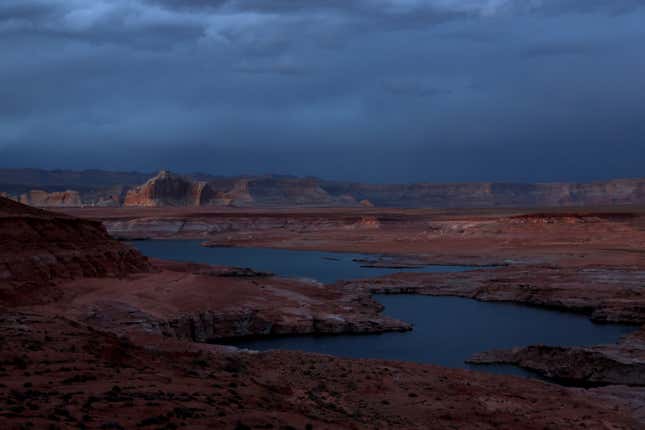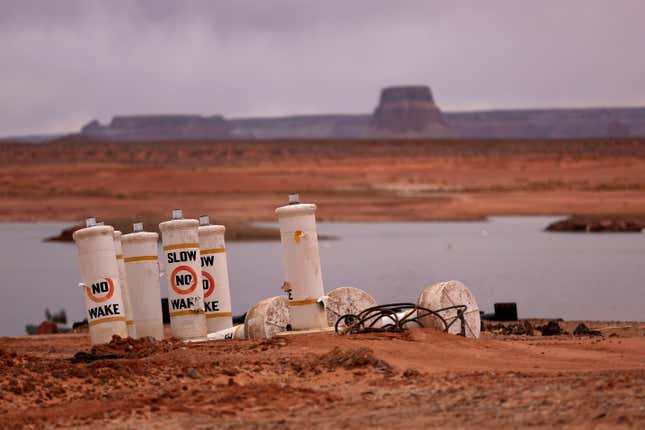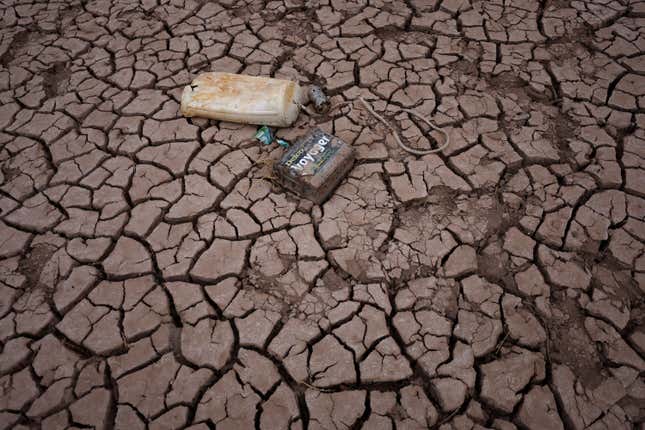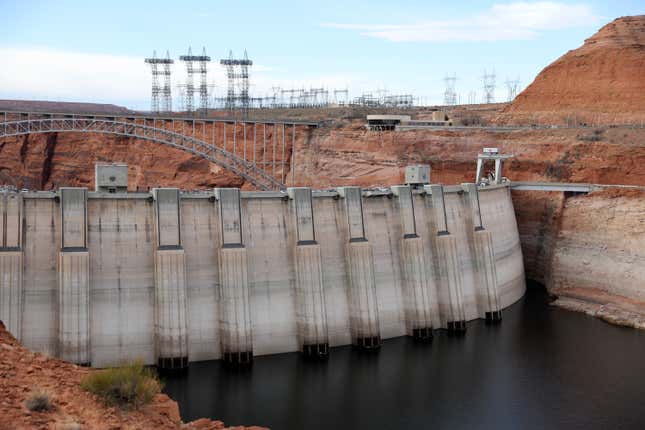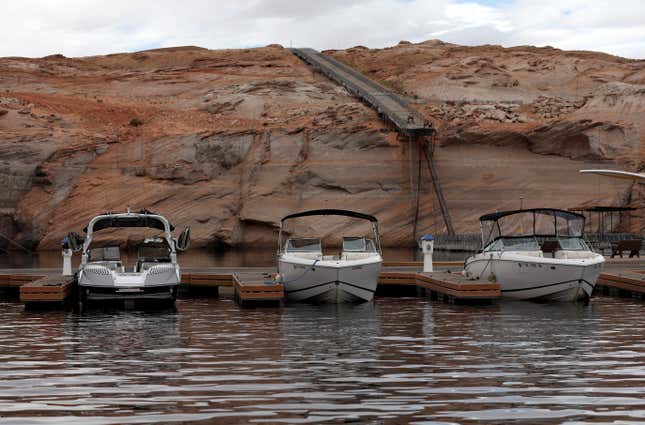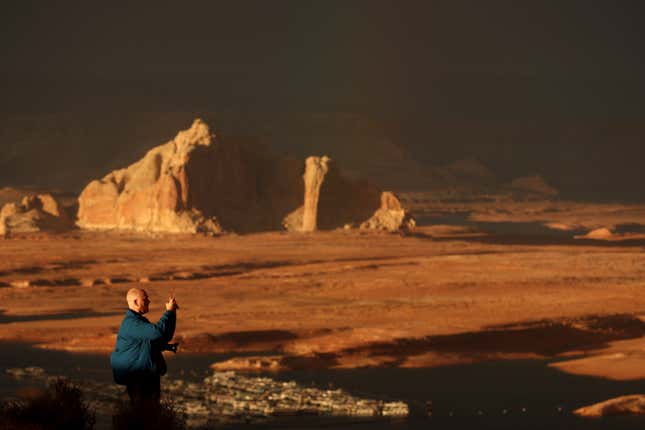Lake Powell, the country’s second-largest reservoir and a key source of water and power for much of the West, is more parched than ever. Earlier this month, the lake dropped below 25% capacity, the federal government said, and has also lost 7% of its total potential capacity since 1963.
The past year has been an exercise in watching Lake Powell’s water levels dip to increasingly worrying lows as it passed record after record. Last summer saw a series of firsts, as low levels in Lake Powell and Lake Mead triggered the first-ever water cuts on the Colorado River system, as well as emergency water releases from upstream reservoirs.
